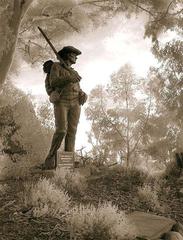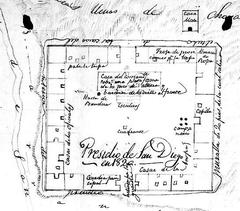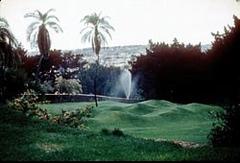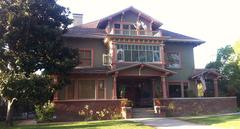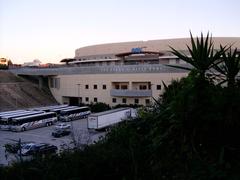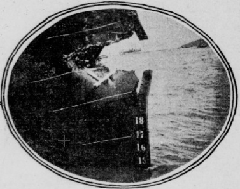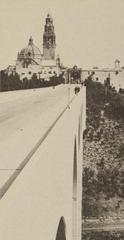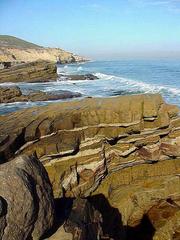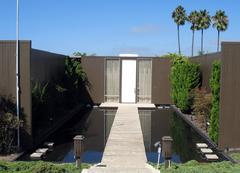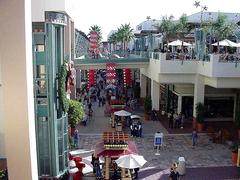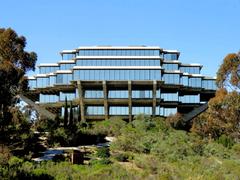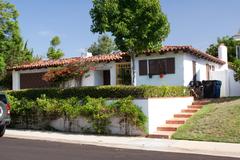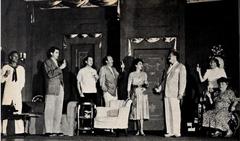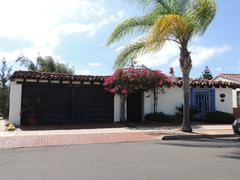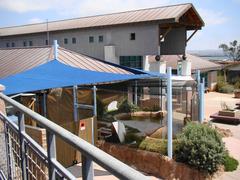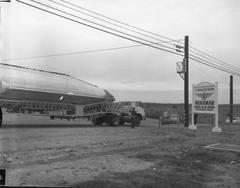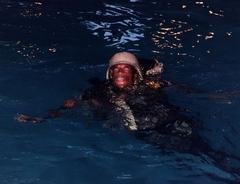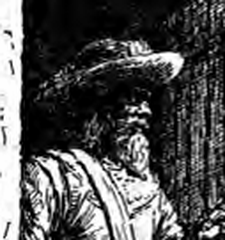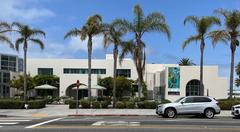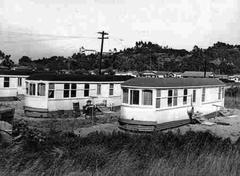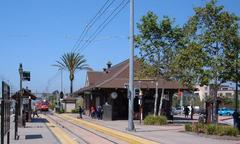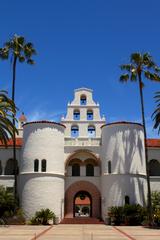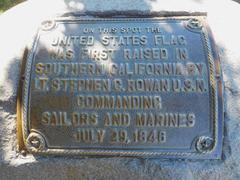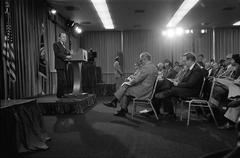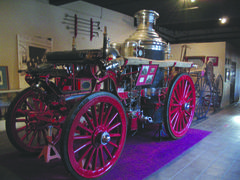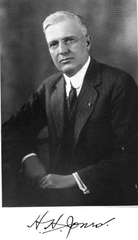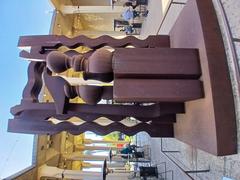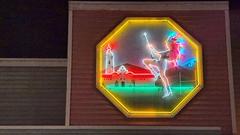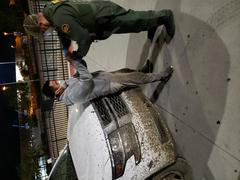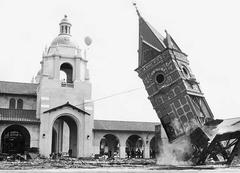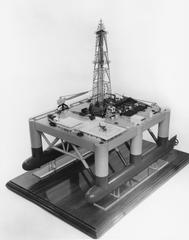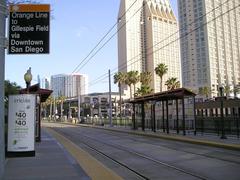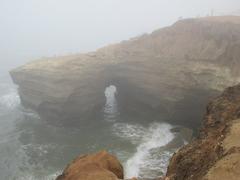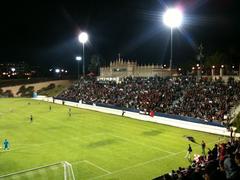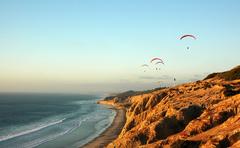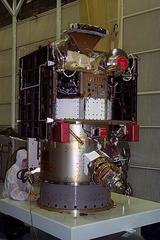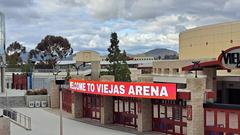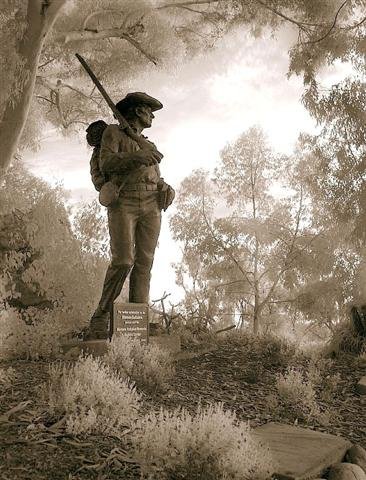
Presidio of San Diego Visiting Hours, Tickets, and Historical Sites Guide
Date: 14/06/2025
Introduction to the Presidio of San Diego
Set atop Presidio Hill, the Presidio of San Diego stands as California’s first permanent European settlement and a keystone in the state’s multicultural history. This landmark is rooted in centuries of cultural interaction—from the ancestral Kumeyaay people, who stewarded the land for millennia, to Spanish colonizers who established El Presidio Real de San Diego in 1769, followed by Mexican and American influences that have shaped the region. Today, visitors can explore archaeological remnants, historic monuments, and the Junípero Serra Museum, which offers engaging exhibitions on indigenous heritage, Spanish colonial legacy, and the evolving cultural landscape. Presidio Park also provides scenic overlooks of the San Diego River Valley and Pacific Ocean, as well as gardens and recreational trails.
This guide offers essential visitor information, including Presidio Park visiting hours, Junípero Serra Museum ticket details, accessibility features, parking options, and tips for exploring nearby attractions such as Old Town San Diego State Historic Park, Mission San Diego de Alcalá, and the San Diego River Trail. Whether you are a history enthusiast, cultural explorer, or casual visitor, this comprehensive guide will help you make the most of your visit to the Presidio of San Diego. For the latest information, refer to official resources like the San Diego History Center and San Diego Parks & Recreation.
Table of Contents
- Introduction to the Presidio of San Diego
- Historical Overview
- Indigenous Heritage and Early Settlement
- Spanish Colonial Legacy
- Transition to Mexican and American Rule
- Architectural and Archaeological Importance
- Cultural Interactions and Lasting Impact
- Visitor Information: Hours, Tickets, and Accessibility
- Guided Tours and Special Events
- Photographic Spots and Nearby Attractions
- Comparative Significance Among Spanish Presidios
- Symbolism and Recognition
- Contemporary Relevance and Community Engagement
- Presidio Park: Visiting Hours, Tickets, and Attractions
- Educational and Cultural Programming
- Facilities and Accessibility
- Tips for a Memorable Visit
- Frequently Asked Questions (FAQ)
- Preservation and Cultural Significance
- Visitor Demographics and Usage
- Conclusion and Call to Action
- References and Further Reading
Historical Overview
Indigenous Heritage and Early Settlement
Long before European arrival, the Kumeyaay people thrived on Presidio Hill, utilizing its resources for over 10,000 years (San Diego History & Heritage). Known as Cosoy, the area was chosen for its proximity to the river and bay, providing vital resources for settlement. Archaeological evidence and ongoing recognition highlight the Kumeyaay as the original stewards of the land.
The Spanish era began in 1769 when Gaspar de Portolà and Father Junípero Serra established El Presidio Real de San Diego—the first permanent European outpost in California (Presidio SD). The adjacent Mission San Diego de Alcalá marked the start of the California mission system, bringing transformative changes to local society.
Spanish Colonial Legacy
The Presidio was designed as a fortified military outpost within a network of presidios along the California coast (Tourist Secrets). Built primarily from adobe, it included defensive walls, a chapel, commandant’s quarters, stables, and living quarters for soldiers and their families (Presidio SD). The intertwined military and religious functions were evident—Franciscan friars, like Junípero Serra, led efforts to convert indigenous populations while extending Spanish territorial claims.
Transition to Mexican and American Rule
After Mexico gained independence from Spain in 1821, the Presidio’s military role diminished, and the site was gradually abandoned as residents moved downhill (San Diego History & Heritage). The Treaty of Guadalupe Hidalgo (1848) brought California under U.S. control, and the area’s development shifted toward the waterfront, laying the foundation for modern San Diego.
Architectural and Archaeological Importance
While the original adobe buildings are no longer visible above ground, the site remains a focus for archaeological research (Presidio SD). Excavations have revealed remnants of the chapel and other structures. The Junípero Serra Museum, built in 1929 in Mission Revival style, now houses exhibits on the land’s indigenous, Spanish, Mexican, and American periods (San Diego History & Heritage).
Cultural Interactions and Lasting Impact
The Presidio became a crucible for cultural interaction—Spanish, indigenous, Mexican, and later American influences converged, leading to evolving architectural styles, agricultural practices, and religious customs. The legacy of these interactions is visible today in Old Town San Diego’s preserved adobe homes and Victorian mansions (San Diego History & Heritage).
Visitor Information: Presidio of San Diego Hours, Tickets, and Accessibility
- Presidio Park is open daily from 7:00 AM to 9:00 PM (San Diego Parks & Recreation).
- Junípero Serra Museum is typically open Wednesday through Sunday, 11:00 AM to 4:00 PM. Admission is free, but donations are appreciated (San Diego History Center).
- The park and museum are wheelchair accessible; paved paths and accessible restrooms are available. Free parking is on-site, though spaces may be limited on weekends. Old Town Transit Center provides nearby trolley and bus access.
Guided Tours and Special Events
Guided tours are periodically available through the San Diego History Center and local historical societies. These tours delve into the Presidio’s history, archaeological discoveries, and cultural significance. The park also hosts living history demonstrations, reenactments, and cultural festivals. Check the San Diego History Center website and Old Town San Diego State Historic Park events calendar for current schedules.
Photographic Spots and Nearby Attractions
- Scenic overlooks from Presidio Park and the Serra Museum tower offer panoramic views of San Diego.
- Old Town San Diego State Historic Park is just downhill, with preserved 19th-century buildings, museums, and restaurants (The Broke Backpacker).
- Mission San Diego de Alcalá provides further insight into the region’s mission history.
- San Diego River Trail offers walking and biking opportunities close by.
Comparative Significance Among Spanish Presidios
San Diego’s Presidio was the first Spanish presidio on the West Coast and is part of a broader network that includes San Antonio, Santa Barbara, and San Francisco (Tourist Secrets). The San Diego Presidio’s preserved remains and interpretive exhibits make it one of the most informative sites for exploring Spanish colonial history in North America.
Symbolism and Recognition
The Presidio symbolizes the beginning of California’s transformation from indigenous homeland to Spanish colony, Mexican territory, and eventually an American state (Tourist Secrets). Recognized as a California Historical Landmark and listed on the National Register of Historic Places, it remains a touchstone for understanding regional history.
Contemporary Relevance and Community Engagement
The Presidio continues to serve as an educational resource and a site for reflection, community events, and cultural celebrations (San Diego History & Heritage). Ongoing collaborations with indigenous communities and historians aim to present a more inclusive narrative that honors all groups who shaped the region.
Presidio Park: Visiting Hours, Tickets, and Attractions
Historical Landmarks
- Junípero Serra Museum: Features exhibits on Kumeyaay heritage, colonization, and early San Diego (San Diego County Cultural Resources).
- Padre Cross: Erected in 1913 to honor Franciscan friars, it marks the original chapel site.
- Archaeological Sites: Outlines and plaques mark the original fortifications; key finds are displayed in the museum.
Natural Beauty
- Panoramic Vistas: Overlooks of Old Town, the river valley, and the ocean.
- Gardens: Landscaped with native and Mediterranean plants, offering tranquil walking paths.
Recreation
- Trails: Paved and unpaved paths for all fitness levels, with interpretive signage.
- Picnic Areas: Tables and grills throughout the park; lawns for gatherings.
- Event Spaces: Popular for weddings and community events, especially the museum terrace.
Educational Programming
- Guided Tours & School Programs: Offered by the Serra Museum and San Diego History Center, focusing on various aspects of the park’s past (San Diego History Center).
- Living History Events: Reenactments, Founders’ Day, and Kumeyaay cultural celebrations.
Accessibility and Visitor Services
- Accessibility: Wheelchair-accessible paths, restrooms, and parking.
- Parking & Transportation: Free lots in the park; public transport from Old Town (San Diego Travel Guide).
- Facilities: Clean restrooms, drinking fountains, shaded seating.
Tips for a Memorable Visit
- Wear comfortable shoes for hilly terrain.
- Bring water and sun protection.
- Visit at sunrise or sunset for the best photography.
- Check event and museum schedules on the San Diego History Center website.
- Combine your trip with nearby attractions for a full historical experience.
Frequently Asked Questions (FAQ)
Q: What are the park hours?
A: Open daily from sunrise to sunset.
Q: Is there an admission fee for the park or museum?
A: Park admission is free. The museum has a modest entrance fee; check online for current details.
Q: Are guided tours available?
A: Yes, offered by the museum and San Diego History Center. Check websites for times and pricing.
Q: Is the park wheelchair accessible?
A: Yes, with accessible paths and facilities.
Q: Where can I park?
A: Free parking in multiple lots; public transport options nearby.
Preservation and Cultural Significance
Presidio Park is protected under local, state, and federal regulations, ensuring the preservation of California’s first European settlement and the heritage of the Kumeyaay people (San Diego County Cultural Resources).
Visitor Demographics and Usage
The park welcomes local residents, school groups, history enthusiasts, and tourists, with visitation in the hundreds of thousands annually due to its central location and free access.
Conclusion and Call to Action
Presidio Park and the Presidio of San Diego offer a unique combination of history, culture, and natural beauty. Whether visiting for education, recreation, or reflection, the site provides something for everyone. For the latest updates on hours, tickets, events, and tours, consult the Presidio San Diego website and the San Diego History Center. Enhance your experience by exploring nearby attractions and participating in community events.
Download the Audiala app, follow us on social media, and subscribe to our newsletter for ongoing travel tips and heritage updates.
References and Further Reading
- San Diego History Center
- Presidio SD
- San Diego Parks & Recreation
- Whaley House San Diego
- San Diego History & Heritage
- San Diego Tourism
- San Diego Travel Guide
- La Jolla Mom
- The Broke Backpacker
- The Tourist Checklist
- Tourist Secrets
- San Diego County Cultural Resources
